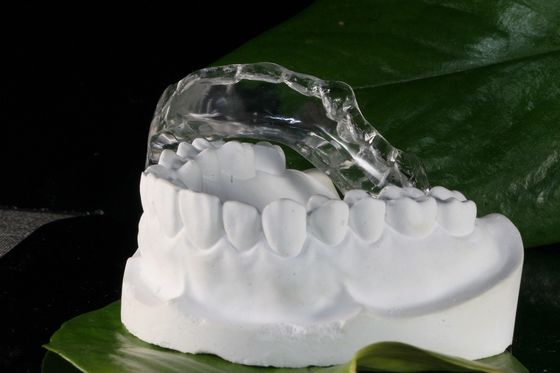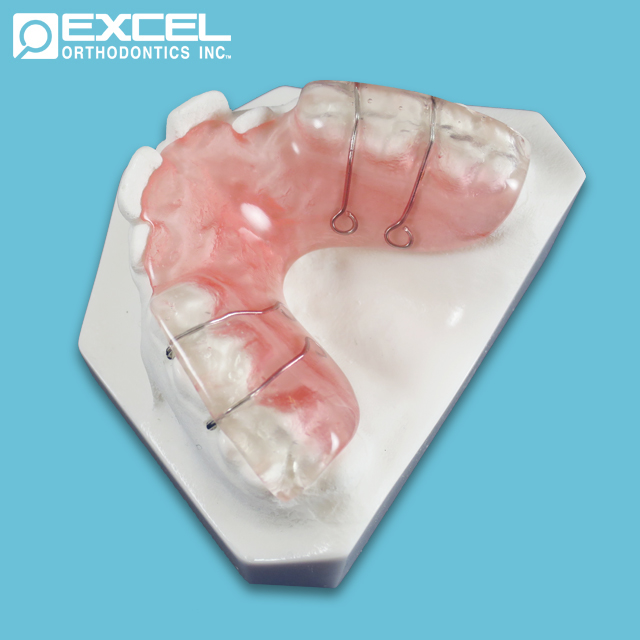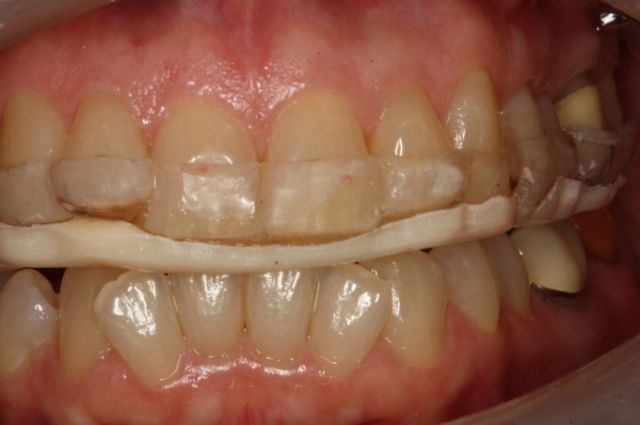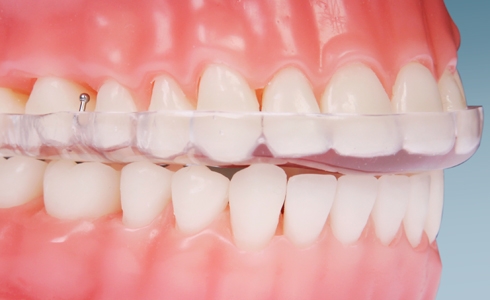Bite planes are versatile dental appliances that play a crucial role in orthodontic treatment and bite correction. These devices, which can be fabricated by dental laboratories like Zenta Dental Lab, offer a non-invasive approach to addressing various dental issues. This comprehensive guide will explore the intricacies of bite planes, their applications, and what patients can expect when using them.

What is a bite plane?
A bite plane is a custom-made dental appliance designed to modify the way teeth come together and reposition the lower jaw. This simple yet effective device can have a significant impact on a patient’s bite and overall oral health.
Function and Design
Bite planes are typically made of acrylic or metal and fit over either the upper or lower teeth. Their primary function is to create a physical barrier that prevents the lower teeth from fully closing onto the upper teeth.
- Material: Usually acrylic or metal
- Placement: Fits over upper or lower teeth
- Purpose: Guides jaw into a more favorable position
Mechanism of Action
The bite plane works by creating a slight separation between the upper and lower teeth, effectively altering the bite relationship. This separation can:
- Reduce pressure on specific teeth
- Encourage proper jaw alignment
- Alleviate symptoms associated with temporomandibular joint (TMJ) disorders
Types of Bite Planes
There are several types of bite planes, each designed for specific purposes:
| Type | Description | Primary Use |
|---|---|---|
| Anterior | Covers front teeth | Corrects deep bite |
| Posterior | Covers back teeth | Addresses underbite |
| Full-coverage | Covers all teeth | Treats bruxism |
Dental laboratories like Zenta Dental Laboratory specialize in creating custom bite planes tailored to each patient’s unique needs. Their expertise ensures that the appliance fits comfortably and functions effectively.

How many months to wear a bite plane?
The duration of bite plane treatment can vary significantly depending on individual factors and the specific dental issues being addressed. Understanding the timeline for bite plane wear is crucial for patients to set realistic expectations and maintain commitment to their treatment plan.
Factors Influencing Treatment Duration
Several factors can affect how long a patient needs to wear a bite plane:
- Severity of the dental issue
- Patient’s age and overall oral health
- Consistency of wear
- Response to treatment
Short-term vs. Long-term Use
Bite planes can be prescribed for both short-term and long-term use:
- Short-term: Often used for a few weeks to months to alleviate acute symptoms
- Long-term: May be recommended for ongoing management of chronic conditions
Treatment Phases
The bite plane treatment process typically involves several phases:
- Initial adjustment period (1-2 weeks)
- Active treatment phase (3-6 months)
- Maintenance phase (varies)
It’s important to note that these timeframes are general guidelines, and actual treatment duration can vary. Regular check-ups with the dentist or orthodontist are essential to monitor progress and make necessary adjustments.
Zenta Lab, a reputable dental laboratory, works closely with dental professionals to create bite planes that are not only effective but also comfortable for long-term wear when necessary.

Is bite plane removable?
The removability of bite planes is a key feature that impacts their use and effectiveness. Understanding whether a bite plane is removable and the implications of this characteristic is crucial for patients considering this treatment option.
Types of Bite Planes: Removable vs. Fixed
Bite planes can be categorized into two main types based on their removability:
- Removable bite planes
- Can be taken out by the patient
- Typically used for less severe cases
- Allows for easier cleaning and maintenance
- Fixed bite planes
- Permanently attached to the teeth
- Used for more severe cases or when consistent wear is crucial
- Requires special care for oral hygiene
Advantages of Removable Bite Planes
Removable bite planes offer several benefits:
- Easy cleaning: Patients can remove the appliance for thorough brushing and flossing
- Flexibility: Can be taken out for eating, special occasions, or sports
- Adjustability: Dentists can easily modify or adjust the appliance as needed
Considerations for Removable Bite Planes
While removable bite planes offer convenience, they also come with certain considerations:
- Discipline required: Patients must be diligent about wearing the appliance as directed
- Risk of loss or damage: Removable appliances can be misplaced or accidentally damaged
- Potential for inconsistent results: Irregular wear may slow down treatment progress
Zenta Dental Lab specializes in creating both removable and fixed bite planes, ensuring that each patient receives an appliance that best suits their specific needs and lifestyle.

What is another name for a bite plane?
Bite planes are known by various names in the dental field, which can sometimes lead to confusion among patients. Understanding these alternative terms can help patients better communicate with their dental professionals and comprehend their treatment plans.
Common Alternative Names
Bite planes are often referred to by several other terms, including:
- Anterior bite ramps
- Posterior bite planes
- Bite ramps
- Occlusal splints
- Bite appliances
Terminology Based on Function
The terminology used can sometimes reflect the specific function or placement of the bite plane:
| Term | Description |
|---|---|
| Anterior bite plane | Focuses on front teeth |
| Posterior bite plane | Addresses back teeth |
| Occlusal splint | Emphasizes bite adjustment |
| Night guard | Used primarily during sleep |
Regional and Professional Variations
The terminology can also vary based on:
- Geographic location
- Dental specialty
- Individual practitioner preference
It’s important for patients to clarify with their dental professional if they encounter unfamiliar terms. Dental laboratories like Zenta Dental Laboratory are familiar with these various terms and can provide guidance to both dental professionals and patients regarding the specific type of appliance being used.
Posterior bite plane vs. anterior bite plane
Understanding the differences between posterior and anterior bite planes is crucial for both dental professionals and patients. Each type serves specific purposes and addresses different dental issues.
Anterior Bite Plane
Anterior bite planes are designed to cover the front teeth and are primarily used to address overbite issues.
Characteristics:
- Covers incisors and canines
- Guides lower jaw forward
- Often smaller and less noticeable
Uses:
- Correcting deep bite
- Reducing wear on front teeth
- Alleviating TMJ symptoms
Posterior Bite Plane
Posterior bite planes are placed on the back teeth and are used to address various bite issues.
Characteristics:
- Covers premolars and/or molars
- Can raise or lower bite
- May be larger than anterior bite planes
Uses:
- Correcting underbite
- Addressing crossbite
- Improving chewing motion
Comparison Table
| Feature | Anterior Bite Plane | Posterior Bite Plane |
|---|---|---|
| Placement | Front teeth | Back teeth |
| Primary function | Guides jaw forward | Adjusts back bite |
| Visibility | Less noticeable | May be more visible |
| Common issues addressed | Overbite, TMJ | Underbite, crossbite |
Zenta Dental Lab specializes in crafting both anterior and posterior bite planes, ensuring that each appliance is tailored to the patient’s specific needs and the dentist’s treatment plan.
Understanding anterior bite plane in dentistry
Anterior bite planes play a significant role in orthodontic treatment and bite correction. These appliances, often crafted by skilled technicians at dental laboratories like Zenta Lab, are designed to address specific dental issues related to the front teeth and overall bite alignment.
Purpose and Function
The primary purpose of an anterior bite plane is to correct deep bite, a condition where the upper front teeth excessively overlap the lower front teeth.
Key functions:
- Reduces overlap of front teeth
- Guides lower jaw into proper position
- Alleviates pressure on back teeth
- Promotes proper muscle function
Design and Construction
Anterior bite planes are custom-made to fit each patient’s unique dental anatomy.
Design elements:
- Material: Usually acrylic or metal
- Coverage: Fits over upper front teeth
- Inclined plane: Creates a ramp for lower teeth to slide against
Benefits of Anterior Bite Planes
The use of anterior bite planes can lead to several positive outcomes:
- Improved bite alignment
- Reduced wear on front teeth
- Alleviation of TMJ symptoms
- Enhanced facial aesthetics
- Better overall oral function
Zenta Dental Laboratory employs advanced techniques to create anterior bite planes that are both effective and comfortable for patients, ensuring optimal treatment outcomes.
Factors affecting the price of bite plane treatment
The cost of bite plane treatment can vary significantly based on several factors. Understanding these factors can help patients make informed decisions about their dental care and budget accordingly.
Material and Type of Bite Plane
The choice of material and specific type of bite plane can impact the overall cost.
Cost factors related to materials:
- Acrylic: Generally less expensive
- Metal: Often more costly but more durable
- Hybrid materials: Prices may vary
Types and their relative costs:
- Simple anterior bite plane: Lower cost
- Full-coverage bite plane: Higher cost
- Custom-designed complex bite planes: Highest cost
Dental Professional’s Expertise
The experience and qualifications of the dental professional can influence the price of treatment.
- General dentists: May charge less
- Orthodontists or specialists: Often charge higher fees
- Reputation and location of the practice: Can affect pricing
Treatment Complexity and Duration
The complexity of the case and the expected duration of treatment play a role in determining costs.
Factors influencing complexity:
- Severity of bite issues
- Need for additional procedures
- Frequency of adjustments required
Treatment duration considerations:
- Short-term use: Generally less expensive
- Long-term or indefinite use: May incur ongoing costs
Geographic Location
The cost of bite plane treatment can vary significantly based on the location of the dental practice.
- Urban areas: Typically higher costs
- Rural areas: Often lower costs
- Regional economic factors: Can influence pricing
Insurance Coverage
Dental insurance can significantly impact out-of-pocket costs for patients.
- Coverage varies by plan
- Some plans may cover a portion of the cost
- Others may consider it a cosmetic procedure and not provide coverage
Zenta Dental Lab works with dental professionals to provide high-quality bite planes at competitive prices, helping to manage costs while ensuring effective treatment outcomes.
Using bite plane for deep bite correction
Deep bite, a condition where the upper front teeth excessively overlap the lower front teeth, can lead to various oral health issues. Bite planes, particularly anterior bite planes, are effective tools in correcting this condition. Understanding how bite planes work in deep bite correction can help patients appreciate the treatment process and its benefits.
Mechanism of Action
Bite planes correct deep bites through several mechanisms:
- Creating separation: The bite plane provides a physical barrier between upper and lower teeth.
- Guiding jaw position: Encourages the lower jaw to move forward into a more favorable position.
- Muscle retraining: Helps retrain the jaw muscles to function in the new position.
Stages of Deep Bite Correction
The process of correcting a deep bite using a bite plane typically involves several stages:
1. Initial Assessment
- Dentist evaluates the severity of the deep bite
- Takes impressions for custom bite plane fabrication
2. Appliance Placement
- Bite plane is fitted and adjusted
- Patient receives instructions for wear and care
3. Active Treatment
- Regular wear of the bite plane (often 20-22 hours per day)
- Periodic check-ups to monitor progress
4. Adjustment Phase
- Bite plane may be adjusted as teeth and jaw position change
- Additional orthodontic treatments may be incorporated if necessary
5. Retention
- Once desired correction is achieved, wear time may be reduced
- A retainer may be prescribed to maintain results
Benefits of Using Bite Planes for Deep Bite
Correcting a deep bite with a bite plane can lead to numerous benefits:
- Reduced risk of tooth wear and damage
- Improved jaw joint function
- Enhanced facial aesthetics
- Better overall oral health
- Potential improvement in speech and chewing function
Zenta Dental Laboratory specializes in creating custom bite planes designed for effective deep bite correction, ensuring that each appliance is tailored to the patient’s specific needs and treatment goals.
How to use an anterior bite plane effectively
Proper use of an anterior bite plane is crucial for achieving the desired treatment outcomes. Patients who understand how to use and care for their bite plane are more likely to experience successful results. Here are key guidelines for effective use of an anterior bite plane.
Wearing Schedule
Adhering to the prescribed wearing schedule is essential for treatment success.
Typical wearing instructions:
- Wear 20-22 hours per day (unless otherwise instructed)
- Remove for eating and oral hygiene
- May be worn during sleep
Insertion and Removal
Proper technique for inserting and removing the bite plane helps prevent damage and ensures correct positioning.
Steps for insertion:
- Ensure hands and bite plane are clean
- Align the bite plane with upper front teeth
- Gently press into place, ensuring a snug fit
Steps for removal:
- Use fingertips to gently loosen edges
- Carefully pull down and away from teeth
- Avoid using excessive force
Cleaning and Maintenance
Regular cleaning is crucial for maintaining the bite plane’s effectiveness and preventing oral health issues.
Cleaning routine:
- Rinse after each removal
- Brush with a soft toothbrush and non-abrasive toothpaste daily
- Soak in denture cleaner as recommended by your dentist
Monitoring and Adjustments
Regular check-ups allow for necessary adjustments and progress monitoring.
- Attend all scheduled appointments
- Report any discomfort or fit issues promptly
- Be prepared for potential adjustments as treatment progresses
Zenta Dental Lab provides detailed care instructions with each custom-made anterior bite plane, ensuring that patients have the information they need to use their appliance effectively.
Comparing different types of bite planes
Bite planes come in various types, each designed to address specific dental issues. Understanding the differences between these types can help both dental professionals and patients make informed decisions about treatment options.
Anterior vs. Posterior Bite Planes
These two main categories of bite planes differ in their placement and primary functions.
Anterior Bite Planes:
- Placement: Cover front teeth
- Primary use: Correct deep bite, guide jaw forward
- Advantages: Less visible, effective for overbite correction
Posterior Bite Planes:
- Placement: Cover back teeth
- Primary use: Address underbite, improve chewing motion
- Advantages: Can provide more substantial bite elevation
Full-Coverage vs. Partial-Coverage Bite Planes
The extent of tooth coverage varies among bite planes, affecting their application and comfort.
Full-Coverage Bite Planes:
- Cover all teeth on one arch
- Often used for severe cases or bruxism
- Provide comprehensive bite adjustment
Partial-Coverage Bite Planes:
- Cover only a portion of the dental arch
- Less intrusive, often more comfortable
- Suitable for targeted treatment of specific issues
Removable vs. Fixed Bite Planes
The ability to remove the bite plane impacts its use and maintenance.
| Feature | Removable Bite Planes | Fixed Bite Planes |
|---|---|---|
| Placement | Can be taken out by patient | Permanently attached |
| Hygiene | Easier to clean | Requires special care |
| Compliance | Depends on patient discipline | Ensures consistent wear |
| Adjustability | Can be easily modified | Adjustments more complex |
Material Comparison
Bite planes can be made from various materials, each with its own properties.
Acrylic Bite Planes:
- Lightweight and comfortable
- Easy to adjust
- May wear down faster than other materials
Metal Bite Planes:
- Highly durable
- Thinner profile
- May be more expensive
Hybrid Materials:
- Combine benefits of multiple materials
- Can be customized for specific needs
- Often provide a balance of comfort and durability
Zenta Dental Laboratory offers a wide range of bite plane options, utilizing various materials and designs to meet the specific needs of each patient and treatment plan.
Anterior bite plane: indications and usage
Anterior bite planes are versatile dental appliances with a wide range of applications in orthodontics and general dentistry. Understanding the various indications for anterior bite planes can help dental professionals recommend appropriate treatment options and help patients comprehend their treatment plans.
Primary Indications
Anterior bite planes are primarily indicated for several dental conditions:
- Deep bite correction
- Temporomandibular joint (TMJ) disorders
- Bruxism (teeth grinding)
- Preparation for orthodontic treatment
Deep Bite Correction
One of the most common uses of anterior bite planes is in correcting deep bites.
How it works:
- Creates a physical barrier preventing full closure of teeth
- Encourages lower jaw to move forward
- Reduces excessive vertical overlap of front teeth
Benefits:
- Prevents wear on front teeth
- Improves overall bite alignment
- Enhectively addresses jaw misalignment issues
Temporomandibular Joint (TMJ) Disorders
Anterior bite planes can also be used to alleviate symptoms associated with TMJ disorders.
Mechanism of action:
- Helps reposition the jaw to reduce strain on the joint
- Promotes proper alignment of the jaw during function
- Reduces muscle tension and pain in the jaw area
Benefits:
- Alleviates TMJ-related discomfort
- Improves jaw mobility and function
- Minimizes the risk of long-term joint damage
Bruxism (Teeth Grinding)
Patients suffering from bruxism can benefit from using an anterior bite plane to protect their teeth from excessive wear.
Protective function:
- Acts as a cushion between upper and lower teeth
- Absorbs forces generated during grinding or clenching
- Prevents damage to tooth enamel and dental restorations
Benefits:
- Preserves tooth structure and integrity
- Reduces the risk of fractures and chips
- Alleviates jaw pain and muscle tension
Preparation for Orthodontic Treatment
In some cases, anterior bite planes are used as a preliminary step before initiating orthodontic treatment.
Pre-orthodontic goals:
- Establish proper bite relationship
- Address functional issues prior to braces or aligners
- Create optimal conditions for successful orthodontic outcomes
Benefits:
- Enhances orthodontic treatment efficiency
- Improves overall treatment predictability
- Sets the foundation for long-term stability and oral health
By understanding the indications and potential benefits of anterior bite planes, both patients and dental professionals can make informed decisions regarding treatment options and expectations. Zenta Dental Laboratory offers customized anterior bite planes tailored to each patient’s specific needs and treatment goals.
Conclusion
In conclusion, anterior bite planes play a crucial role in addressing various dental issues, from deep bite correction to TMJ disorders and bruxism. These versatile appliances offer numerous benefits, including improved oral health, enhanced jaw function, and aesthetic improvements. Understanding the different types of bite planes, their indications, and proper usage is essential for achieving successful treatment outcomes.
With advancements in dental technology and materials, patients now have access to custom-made anterior bite planes that are comfortable, effective, and tailored to their individual needs. By working closely with dental professionals and following recommended wearing schedules and maintenance routines, patients can experience the full benefits of anterior bite plane therapy.
Whether used as a standalone treatment or as part of a comprehensive orthodontic plan, anterior bite planes provide valuable solutions for patients seeking to improve their oral health and overall quality of life. Zenta Dental Laboratory remains committed to delivering high-quality, personalized anterior bite planes to support patients on their journey towards a healthier, more functional smile.
